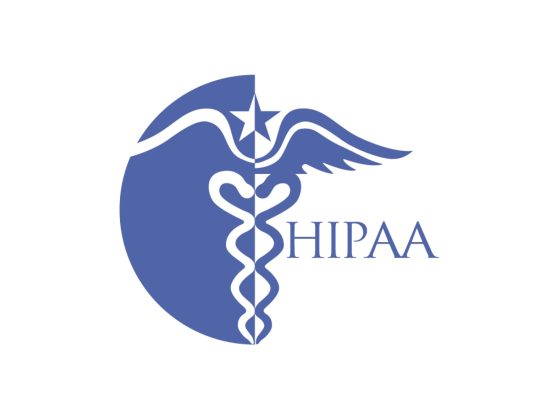The trajectory beyond Large Language Models (LLMs) involves advancements across technical, engineering, infrastructure, and global market dimensions. Looking into the future, several key areas are poised to shape the next wave of innovations in artificial intelligence (AI) and machine learning (ML). Disclaimer: As much as, you know, I can, I did not.
Technical And Engineering Innovations.
More Efficient Models.
While LLMs have grown in size, there is a push towards making AI models more efficient and environmentally sustainable. Techniques like (1) model pruning, (2) quantisation, and (3) knowledge distillation allow for smaller, faster models that maintain high performance levels.
Few-Shot And Zero-Shot Learning.
Advancements in few-shot and zero-shot learning, where models can understand and perform tasks with little to no training data, will reduce the dependency on large datasets and broaden AI applications.
Hybrid Models.
Combining the strengths of different AI approaches, such as symbolic AI with neural networks, to create hybrid models that can reason more effectively and explain their decisions.
Generalisable AI.
Moving towards models that can generalise across tasks without needing task-specific training, essentially making strides towards Artificial General Intelligence (AGI).
Infrastructure Developments.
Edge AI.
Increasing computational power at the edge (near or on the devices where data is generated) will allow for more real-time and privacy-preserving AI applications.
Distributed And Decentralised AI.
Technologies like blockchain could enable distributed AI models that operate in a decentralised manner, enhancing data privacy and security.
Advanced Neural Network Processors.
Development of specialised hardware and processors designed to efficiently run AI algorithms will continue, reducing costs and energy consumption.
Global Market Trends.
Democratisation Of AI.
Tools and platforms that make AI accessible to a wider range of users, including those without technical expertise, will continue to emerge, fostering innovation across various sectors.
Regulation And Ethics.
As AI becomes more integrated into society, the development of ethical guidelines and regulatory frameworks to govern its use will be crucial. This includes addressing biases in AI, ensuring transparency, and protecting user privacy.
AI In Emerging Markets.
AI adoption will accelerate in emerging markets, driving innovation in sectors like agriculture, healthcare, and education, and addressing unique challenges faced by these regions.
Cross-Industry Collaboration.
Increased collaboration across industries and disciplines will drive the development of more sophisticated and specialised AI applications, from healthcare diagnostics to climate change mitigation.
Looking Ahead
The evolution beyond LLMs will likely be characterised by a focus on efficiency, generalisability, and ethical considerations, alongside the technological advancements that enable these shifts. As AI technologies become more integrated into the fabric of daily life and global economies, the emphasis will also shift towards ensuring these technologies are used responsibly and for the greater good. The next phase of AI development will not just be about making models larger or more powerful, but about making them smarter, more sustainable, and accessible to a broader audience, with a keen eye on the societal implications of these advancements.
References:
Sanh, V., Debut, L., Chaumond, J. and Wolf, T., 2019. DistilBERT, a distilled version of BERT: smaller, faster, cheaper and lighter. arXiv preprint arXiv:1910.01108.
Lagunas, F., Malialis, K., Garijo, M. and Vrancx, P., 2021. Pruning Transformers with Trainable Sparse Masks. arXiv preprint arXiv:2104.14690.
Brown, T.B., Mann, B., Ryder, N., Subbiah, M., Kaplan, J.D., Dhariwal, P., Neelakantan, A., Shyam, P., Sastry, G., Askell, A. and Agarwal, S., 2020. Language models are few-shot learners. arXiv preprint arXiv:2005.14165.
Xian, Y., Lampert, C.H., Schiele, B. and Akata, Z., 2018. Zero-shot learning — A comprehensive evaluation of the good, the bad and the ugly. IEEE Transactions on Pattern Analysis and Machine Intelligence, 41(9), pp.2251-2265.
Mao, J., Gan, C., Kohli, P., Tenenbaum, J.B. and Wu, J., 2019. The neuro-symbolic concept learner: Interpreting scenes, words, and sentences from natural supervision. arXiv preprint arXiv:1904.12584.
Gupta, P., Gasse, M., Khalil, E.B., Kumar, P., Lodi, A. and Bengio, Y., 2020. Hybrid models for learning to branch. arXiv preprint arXiv:2006.15212.
Hospedales, T., Antoniou, A., Micaelli, P. and Storkey, A., 2020. Meta-learning in neural networks: A survey. arXiv preprint arXiv:2004.05439.
Pan, S.J. and Yang, Q., 2010. A survey on transfer learning. IEEE Transactions on Knowledge and Data Engineering, 22(10), pp.1345-1359.
Satyanarayanan, M., 2017. The emergence of edge computing. Computer, 50(1), pp.30-39.
Lu, Y., Huang, X., Dai, Y., Maharjan, S. and Zhang, Y., 2020. Blockchain and federated learning for privacy-preserved data sharing in industrial IoT. IEEE Transactions on Industrial Informatics, 16(6), pp.4177-4186.
Jouppi, N.P., Young, C., Patil, N. and Patterson, D., 2017. In-datacenter performance analysis of a tensor processing unit. Proceedings of the 44th Annual International Symposium on Computer Architecture, pp.1-12.
Shneiderman, B., 2020. Bridging the gap between ethics and practice: Guidelines for reliable, safe, and trustworthy human-centered AI systems. ACM Transactions on Interactive Intelligent Systems, 10(4), Article 31.
Cath, C., Wachter, S., Mittelstadt, B., Taddeo, M. and Floridi, L., 2018. Artificial intelligence and the ‘good society’: the US, EU, and UK approach. Science and Engineering Ethics, 24, pp.505-528.
Aker, J.C. and Mbiti, I.M., 2010. Mobile phones and economic development in Africa. Journal of Economic Perspectives, 24(3), pp.207-232.
Davenport, T.H. and Ronanki, R., 2018. Artificial intelligence for the real world. Harvard Business Review, 96(1), pp.108-116.












